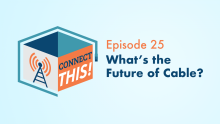Trailblazing Ashland Fiber Network (AFN) Faces Its Fiber Future
Ashland, Oregon has long been a trailblazer in terms of meeting community demand for faster, more affordable broadband access.
The city-owned network has also had a bumpy road—at times being branded as an example of municipal broadband failure. But the network continues to grow as it faces down an urgently-needed pivot toward a fiber-based future.
Despite the current economic healthiness of the network and the clear benefits it’s brought to the community over the last 20 years, local officials are talking about divesting instead of making the financial commitment to continue the investment the city has already made.
The community-owned Ashland Fiber Network (AFN) was first developed in the late 1990s by locals angry at the high prices and historically terrible customer service by the local cable company. Like so many community broadband alternatives, it was a network built from grassroots frustration at consolidated market failure.
Benefits of the community networks were on stark display during the telecommuting and home education boom of the Covid-19 crisis, when the city announced it would be providing free 30 Mbps broadband to all city residents without access to the Internet.

AFN is an open access network, meaning that numerous companies are allowed shared access to the core city network, delivering a variety of broadband, phone, and TV services. As a result, the network’s no-contract broadband pricing tends to be simpler and less expensive than options found in cities dominated by one or two private sector telecom monopolies.




